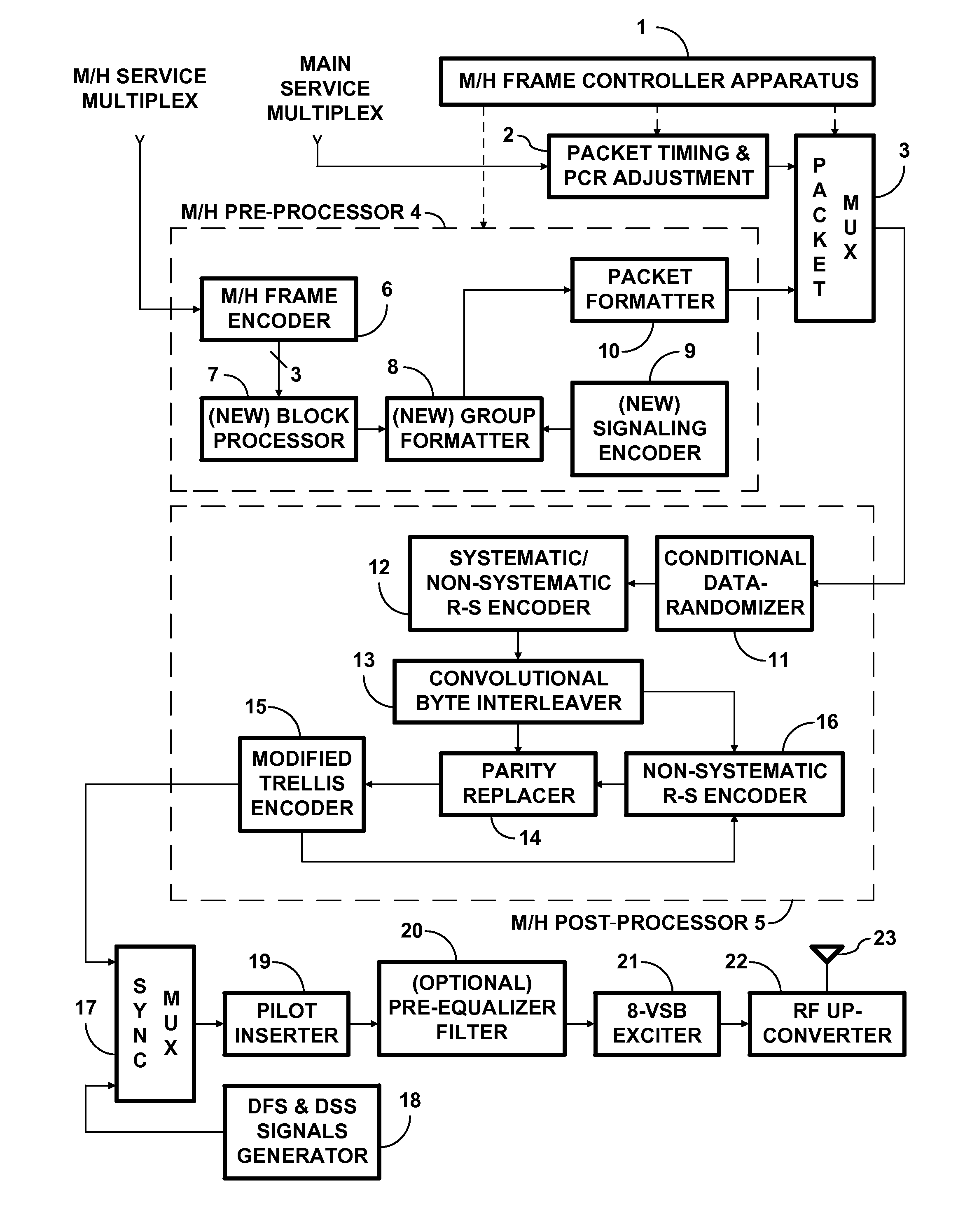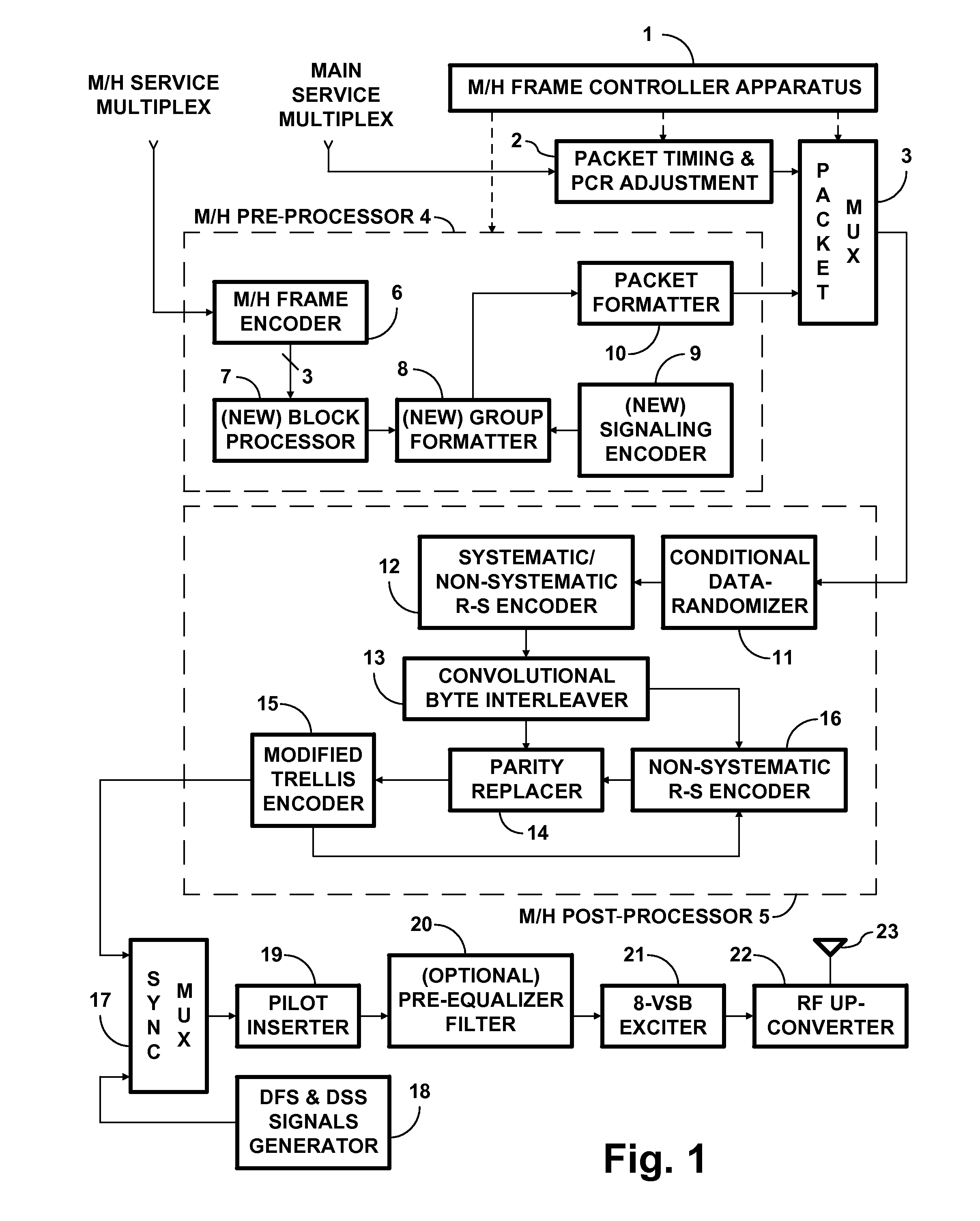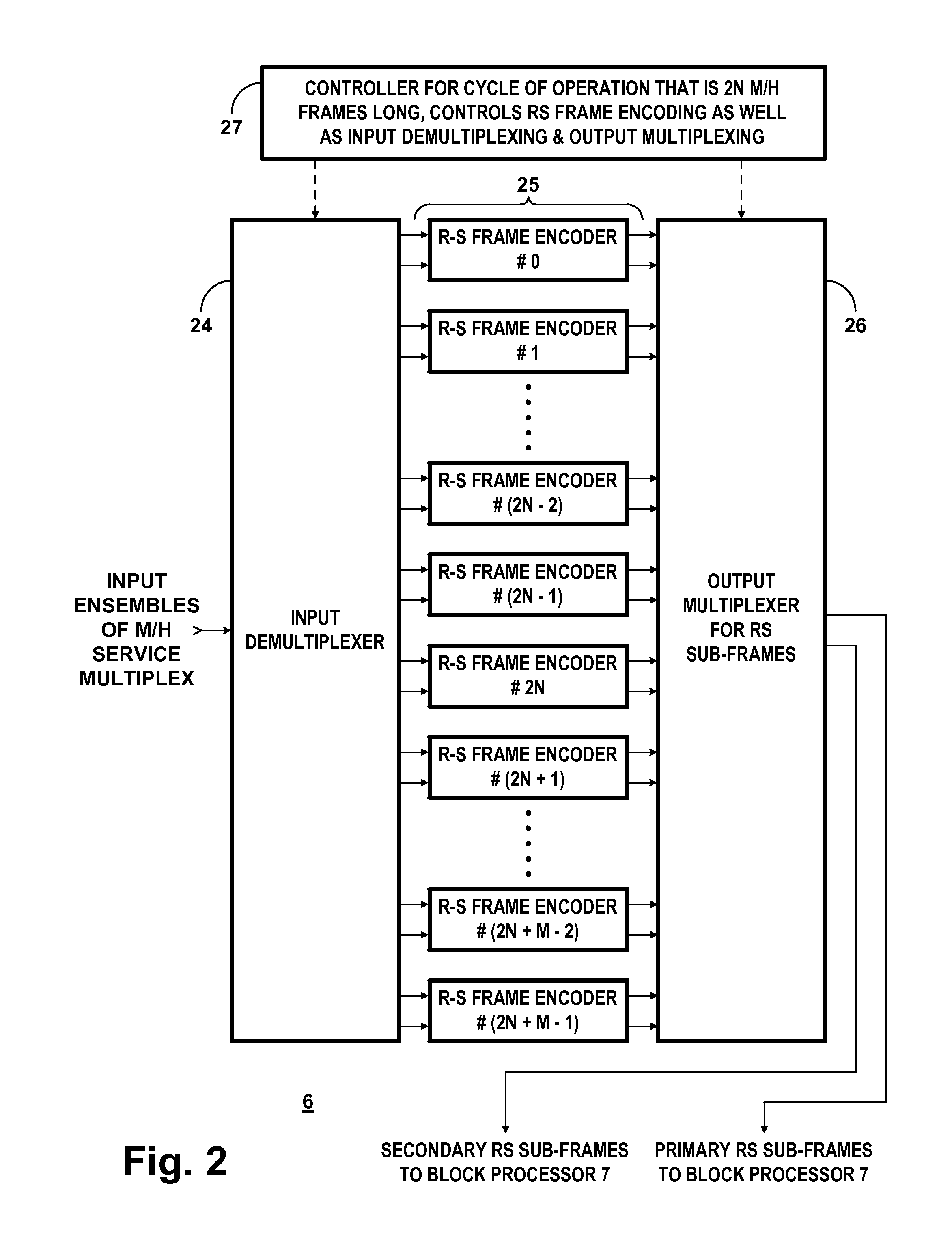Digital television systems employing concatenated convolutional coded data
a digital television and data technology, applied in the field of digital television (dtv) signals, can solve the problems that the receiver of iterative-diversity sccc or pccc dtv signals is prone to difficulty in quickly changing channels, and achieve the effect of tightening the confidence level
- Summary
- Abstract
- Description
- Claims
- Application Information
AI Technical Summary
Benefits of technology
Problems solved by technology
Method used
Image
Examples
Embodiment Construction
[0064]FIG. 1 shows transmitter apparatus for broadcast DTV signals including those intended for reception by mobile / handheld (M / H) receivers. The transmitter apparatus receives two sets of input streams: one consists of the MPEG transport stream (TS) packets of the main-service data and the other consists of the M / H-service data. The M / H-service data are encapsulated in 208-byte-long MPEG-like TS packets before emission, which MPEG-like TS packets have been called “M / H encapsulating packets” or more simply “MHE packets”. This avoids disrupting the reception of the main-service data by legacy 8-VSB receivers. M / H-service data are carried by Internet-Protocol (IP) packets, however. The FIG. 1 transmitter apparatus combines the MPEG TS packets of the main-service data and the IP TS packets of the M / H-service data within one stream of MPEG or MPEG-like TS packets. Then, the FIG. 1 transmitter apparatus processes the combined stream for transmission as an ATSC trellis-coded 8-VSB signal....
PUM
 Login to View More
Login to View More Abstract
Description
Claims
Application Information
 Login to View More
Login to View More - R&D
- Intellectual Property
- Life Sciences
- Materials
- Tech Scout
- Unparalleled Data Quality
- Higher Quality Content
- 60% Fewer Hallucinations
Browse by: Latest US Patents, China's latest patents, Technical Efficacy Thesaurus, Application Domain, Technology Topic, Popular Technical Reports.
© 2025 PatSnap. All rights reserved.Legal|Privacy policy|Modern Slavery Act Transparency Statement|Sitemap|About US| Contact US: help@patsnap.com



